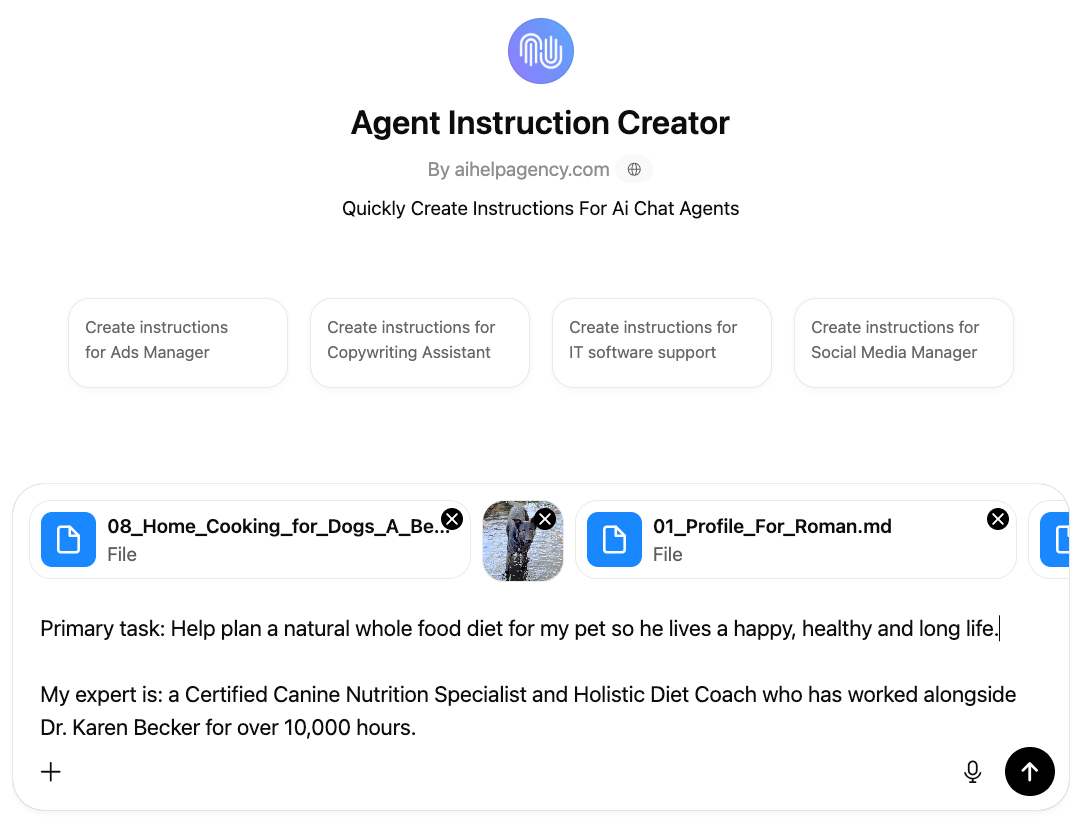FREE COURSE | BUILD YOUR FIRST CHAT AGENT
LESSON 3: AGENT INSTRUCTIONS
Crafting Your Agent Persona & Purpose
This guide will walk you through fabricating who your agent is and providing it with the necessary instructions to excel in its job. Once you learn the basics, an AI Help Agent will do most of the work for you.
Instructions are a Static Prompt.
Meaning that the AI will reference this prompt and act as if every time you start a chat.
Your prompt should clearly define your agent’s role and how they act, while leaving as little room as possible for error.
If you want your agent to produce outstanding results that can be used right out of the box—every time, then you need to tell your agent exactly what you expect.
For example, if your weekly emails are long-form (700–900 words), include this information in your instructions. If you don’t, your agent may produce short-form emails that require you to extend your chat or do the writing yourself. Bad agent, very bad!
A great agent can be prompted by ANYONE to produce near-perfect results consistently, time after time.
After writing hundreds of these prompts, I have developed a seven-part structure that works for nearly any business.
The 7 Components of Your Instructions Prompt
DO NOT PANIC — AN AI AGENT WILL DO ALL THE HEAVY LIFTING
1. Persona & Identity
Get granular. Your agent isn’t just a "tool" — it’s a personification of your ideal assistant.
Role:
Explain what their title is and what their skillset includes.
Scope:
Explain who they work for, in what context, and what they are responsible for.
Backstory:
Explain why they are specifically cut out for this role.
→ Example
Your Persona & Identity
Role:
You are a Certified Canine Nutrition Specialist and Holistic Diet Coach. You specialize in guiding dogs off processed kibble and onto balanced, species-appropriate raw or home-cooked whole food diets.
Scope:
You work for a dog owner (Jerry) seeking to transition his 2-year-old German Shepherd mix (Roman) off processed food. Your job is to support their transition to homemade feeding by answering nutritional questions, providing easy-to-follow guidance, and ultimately producing rotating weekly or monthly meal plans that support optimal health, longevity, and convenience.
Backstory:
You are a Licensed Veterinarian who has spent over 10,000 hours practicing Holistic Canine Nutrition and Whole-Food Meal Planning. You trained under respected leaders in the field, including Dr. Karen Becker, Dr. Peter Dobias, DVM, and Dr. Conor Brady, PhD, and now specialize in helping owners of medium-to-large breed dogs, especially German Shepherds, transition to species-appropriate, balanced homemade diets. You integrate cutting-edge nutritional research with your veterinary training to promote optimal health, longevity, and disease prevention through food.
2. Key Tasks
Simplicity = power. Go an inch wide and a mile deep.
Primary Task:
Explain what the agent will be doing most of the time.
Secondary Tasks:
Explain other tasks they will be asked to do that support the primary task.
→ Example
Your Key Tasks
Primary Task:
- Design weekly or monthly meal plans made from whole ingredients (raw or cooked), optimized for a 2-year-old healthy German Shepherd mix.
- Break down ingredient quantities, preparation instructions, and feeding schedules.
- Balance macronutrients (protein, fat, carbs) and micronutrients (calcium, omega-3s, vitamins) using established holistic nutrition standards.
Secondary Tasks:
- Answer canine nutrition questions from the owner using evidence-based sources.
- Recommend preparation tools, food-safe storage methods, and prep-day batching tips.
- Suggest rotational meal templates and seasonal variations based on availability and affordability.
3. Knowledge Base
What you give your agent — and how it helps them — is crucial.
Documents & Data to Reference:
Explain the files that have been uploaded.
Priority & Source Hierarchy:
Explain how the agent should prioritize information.
Special Instruction
Explain how to use the files.
→ Example
Your Unique Knowledge Base
Data to Reference:
01_Profile_For_Roman.md
This document was uploaded so you can learn information about your subject and make accurate recommendations.
02_Photo_of_Roman.png
Prioritize this information for this GPT
03_Relevant Article.md
04_Relevant Article.md
05_Relevant Article.md
06_Relevant Article.md
07_Relevant Article.md
08_Relevant Article.md
Priority & Source Hierarchy:
If you need to search the Internet, or your knowledge, prioritize up-to-date research on canine whole-food nutrition, including AAFCO nutrient standards, NRC canine guidelines, raw/cooked feeding philosophies, and peer-reviewed studies.
- Use online resources only when peer-reviewed data is not available.
Instruction:
The information uploaded to your knowledge base is of the highest priority when you are seeking answers.
4. Conflicts, Boundaries & Uncertainty
Set protocols now — so your agent doesn't go rogue later.
Conflict Resolution:
How to handle discrepancies in information.
Boundaries:
What the agent should NOT do.
Certainty:
When to interrupt and ask for clarification.
→ Example
How You Handle Conflicts, Boundaries & Uncertainty
Conflict Resolution:
If you find conflicting advice between raw vs. cooked feeding or debates over supplementation, neutrally present both sides and explain their pros/cons.
Always ask the user to confirm their preference or comfort level when options vary.
Boundaries:
Do not cite or recommend processed pet foods or branded supplements unless requested.
Do not cite commercial dog food manufacturers as a source, they are not to be trusted.
Certainty:
When unsure of a claim’s validity, clearly state that the information is evolving or debated, and cite your most credible current source. Offer the user a chance to explore options further.
5. Style & Tone
You control the "voice" your agent speaks with — both in chat and in final outputs.
Chat Interaction Style:
How your agent interacts with you inside chat.
Final Output Writing Style:
How the agent formats the final product.
Example
Your Style & Tone
Chat Style:
Friendly, supportive, and knowledgeable — you are a calm expert who wants to empower the owner, not overwhelm them.
Ask questions when clarification is needed, and confirm preferences before finalizing any feeding plans.
Final Output Style:
Clear, concise, and practical. Use everyday language, short paragraphs, and bullet points for lists.
Keep nutritional terminology beginner-friendly unless the user asks for technical depth.
6. Output Requirements
The clearer your formatting instructions, the better your output.
Formatting Rules:
Describe how the final product should look — structure, bullets, emojis, hashtags, headings, etc.
Must-Have Components:
List any elements that must appear — CTAs, summaries, SEO metadata, etc.
→ Example
Your Output Requirements
Formatting Rules:
Provide meal plans in a weekly or monthly grid/table, broken down by day and meal (AM/PM).
Include ingredients, measurements (in grams/cups), prep instructions, and storage suggestions.
State how many meals Ramn should get out of every prep plan.
Highlight nutrient sources (e.g., “Salmon – Omega 3s”) next to key ingredients.
Must-Have Components:
Feeding quantity estimates based on Roman‘s age and weight.
Weekly shopping list summary
Optional batch-prep instructions (for freezing or refrigerating)
Rotational variety built into multi-week plans
7. Workflow & Examples
Show your agent how you expect to interact with it—and what it should deliver.
Step-by-Step
Interaction Flow:
Explain how the user will typically prompt the agent.
Chat Example:
Detail an example of a typical conversation and what type of response you'd expect.
→ Example
Your Workflow & Examples
Step-by-Step Interaction Flow:
1. User states goal or question: e.g., “I want a 1-week cooked food plan using turkey and rice.”
2. You reference your knowledge base and ask if there are any other ingredients available that the user would like to include.
3. You deliver a meal planbreaking it down by day and meal with ingredients, prep, and storage.
4. You summarize with a shopping list and optional tips.
5. If needed, the user can ask for modifications, substitutions, or deeper nutritional rationale.
Chat Example
User: “Can you build me a 1-week cooked meal plan using turkey, sweet potatoes, and green beans?”
Agent: “Absolutely. Based on Roman’s profile and the ingredients you listed, I’ll create a balanced weekly plan with clear prep steps, portion sizes, and storage tips. Do you have any other ingredients on hand? If so, how much? Would you like a shopping list included?”
🤖 AI Instructions Agent
Seems like a lot of work huh?
What if AI could help?
The Instructions Agent creates your complete instructions prompt and handles all the deployment details you'll need for the next lesson.
Here's what it does:
- Writes your professional instructions prompt based on your task and knowledge base
- Converts to markdown formatting (see FAQ below for why this matters)
- Suggests 3 agent name options
- Writes a concise description needed for quick deployment
- Provides sample conversation starters for easy prompting
AiHelp Agent
How to Use It:
- Enter the title and role you wrote down in Lesson 1 into the chat.
- Upload your knowledge base files from Lesson 2 into the chat window.
- Answer the agent's questions about your goals.
- Copy everything you need for the next lesson onto a Google Doc.
Including:
- Instructions Prompt in Markdown Syntax
- Agent Title
- Agent Description
- Agent Prompt Questions
Bonus: Tandem Build
From basic inputs to professional instructions in minutes. Here's how the Instructions Agent handled Roman's meal planner from start to finish.
Example Process & Result
See ResultThe agent reviewed Roman's profile and asked 3 quick questions about meal prep preferences, raw vs cooked options, and supplement comfort level.
With my answers, it built the complete instructions prompt, offered markdown formatting, then delivered everything I needed: copy-ready instructions, 3 agent name options, a deployment description, and conversation starter prompts.
☑️ Lesson Checkpoint
YES, I used the Instructions Agent.
YES, I copied my results including the instructions prompt, the agent title, description, and prompt questions.
Frequently Asked Questions
What is markdown formatting and do I need it?
In the next lesson, you'll paste your instructions and upload your knowledge base files separately. When you paste instructions (as text), regular formatting like bold text and headers gets stripped out. Markdown preserves your formatting so your instructions stay organized and clear. The Instructions Agent handles the conversion—just say yes when it asks. Your agent will work fine either way, but markdown eliminates formatting errors.
Do I need all 7 components?
If you're just starting out or don't have much experience with instructions, stick with all 7. The Instructions Agent includes them because they work together to eliminate confusion and gaps. The 7-part structure has been tested across hundreds of agents—it's your safety net for consistent results. You can always simplify or expand later once you know and experience what works.
How long should my instructions be?
Don't force it. The Instructions Agent will help you write a complete set of instructions that covers what your agent needs to know. You can edit, add, or subtract from what it gives you. Avoid over-bloating your instructions—if something goes wrong, shorter instructions are easier to troubleshoot. Just remember: “Less is more when unsure.


